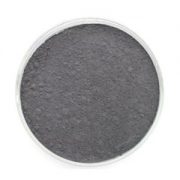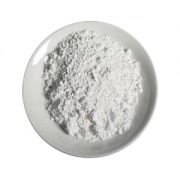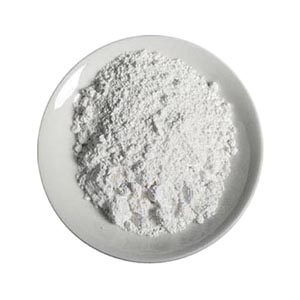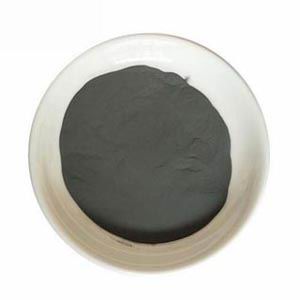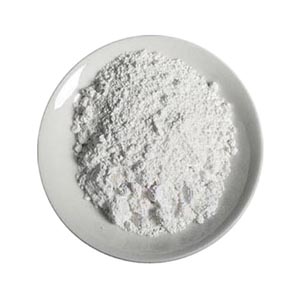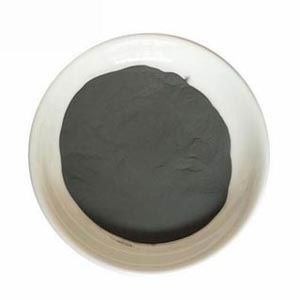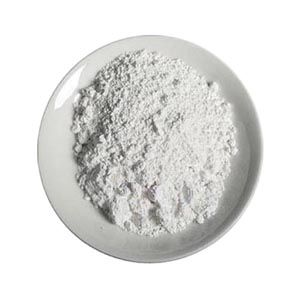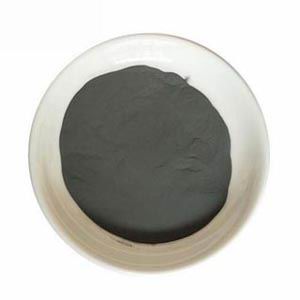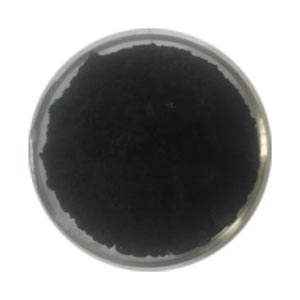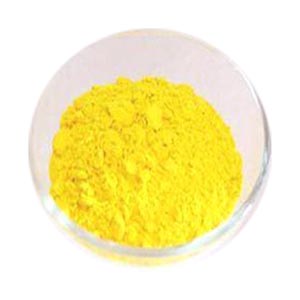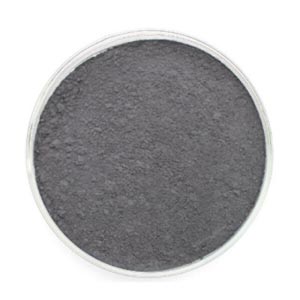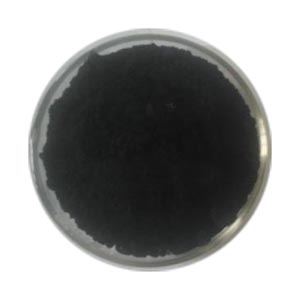
Molybdenum pentachloride
Specification: 99%-99.99%
English alias: Molybdenum (V) chloride; Molybdenumchlorideanhydrous; Molybdenum (V) chloride
CAS number: 10241-05-1
Molecular formula: MoCl5
Molecular weight: 273.205
Melting point: 194°C
- 描述
- Related Information
- Inquiry
property: MoC15 appearance, with it’s physical condition and are solid, liquid and gas are black crystal, black and amber amber liquid and steam. Molecular weight is 273.2, melting point is 194 ℃, boiling point is 268 ℃, 25 ℃ when the density is 2.928 g/cm3. Electrical properties: 25 ℃ is an insulator, 216 ℃ for 1.9 x 10-6 Ω, 258 ℃ for 7.5 x 10-6 Ω.
MoC15 is a volatile and volatile crystal, which is highly pure refractory metal halide. It has chemical effect in the gaseous and liquid phase, the medium temperature is volatile, the gas is easy to decompose into metal molybdenum deposit, easy to dissolve in organic solvents, these characteristics are beneficial to its practical application.
USES: used as chloride catalyst, refractory resin composition, six carbonyl molybdenum, was used to prepare metallic organic compounds.
The effect on the environment:
Health Hazards
Inhalation: inhalation, ingestion.
Health hazards: This product is irritating to eyes, skin, mucous membranes and upper respiratory tract.
Toxicological information and environmental behavior
Hazardous characteristics: Reacts violently with water and emits approximately white smoke toxic and corrosive hydrogen chloride gas. Moisture can corrode metals.
Combustion (decomposition) product: Hydrogen chloride.
On-site emergency monitoring methods, laboratory monitoring methods: atomic absorption spectrometry; plasma spectroscopy
Environmental standards: China (TJ36-79) workshop harmful substances in the air that the maximum allowable concentration 4mg / m3 (by Mo dollars)
Leakage emergency treatment
Isolated from contaminated areas, restricted access. Recommended emergency personnel wearing self-contained breathing apparatus, wear anti-acid coveralls. Do not touch the spill directly. Small spill: Collect with a clean shovel in a dry, clean, covered container. You can also use a lot of water rinse, diluted water into the waste water system. Large amount of leakage, collection and recycling or disposal after disposal.
Protective measures
Respiratory protection: In the event of possible contact with dust, a self-priming filtered respirator must be worn. If necessary, wear self-contained breathing apparatus.
Eye protection: Wear safety glasses.
Protective clothing: Wear plastic protective clothing.
Hand protection: Wear rubber gloves.
Other: Worksite no smoking, eating and drinking. Work done, shower dressing.
first-aid
Skin contact: Remove contaminated clothing, rinse skin thoroughly with soap and water.
Eye contact: lift the eyelid, rinse with running water or saline. Medical treatment.
Inhalation: quickly from the scene to the fresh air. Keep the airway open. If breathing is difficult, give oxygen. Such as breathing to stop, immediately artificial respiration. Medical treatment.
Ingestion: drink enough warm water, vomiting, medical treatment.
Fire fighting methods: Firefighters must wear full body acid and alkali fire service. Extinguishing agents: carbon dioxide, sand.
相关产品
-
Ammonium vanadate
Other name: Ammoniummetavanadate;Ammonium Vanadate(V); ammonium trioxovanadate; hydroxy(dioxo)vanadium ammoniate (1:1); ammonium oxido(dioxo)vanadium
CAS no. : 7803-55-6
EINECS no. : 232-261-3
Molecular formula: NH4VO3
Molecular weight: 116.9776
Melting point: 200 ℃
Solubility in water: 5.1 g/L (20 ℃)
PSA:57.20000
LogP:0.01980
-
Tantalum silicide
CAS no. : 12039-79-1
EINECS no. : 234-902-2
Molecular formula: H6Si2Ta.
Molecular weight: 243.16654
-
Vanadate zirconium
Molecular formula: ZrV2O7.
Molecular weight: 315.7.
CAS no. : 13981-20-9
Appearance: yellow powder
Used in functional ceramics, structural ceramics and other aspects as pigments.
Description: The use of temperature: 400-1080 ℃
The coefficient of linear expansion: – 10 x 10-6 ℃ – 1 -
Niobium metaphosphate
English name: Niobium metaphosphate
Chemical formula: Nb (PO3) 5
Molecular weight: 487.90
Properties: sodium biphosphate glass, white powder, insoluble in water, PH value: 3.8
-
Tantalum nitride
Performance characteristics: high purity, no impurity phase detected by XRD
Tantalum nitride (TaN) has superior physical, chemical and mechanical properties (such as high hardness, wear resistance, chemical inertness, thermal stability and low resistance temperature coefficient), and is widely used in wear-resistant coatings, film resistors and diffusion barriers in integrated circuits -
Zirconium acetylacetonate
Other name: Zirconium-2,4-pentanedionate, Zirconium(IV)acetylacetonate; Tetrakis(acetylacetonato)zirconium(IV); 2,4-pentanedione,zrderiv.; acetyl-zirconiuacetonate; nasemuzirconium; orgatixzc150; pentane-2,4-dione-zirconium (4:1);
CAS no. : 17501-44-9
EINECS no. : 241-241-5
Molecular formula: C20H28 Zr O8
Molecular weight: 487.6555.
Melting point: 171-173℃
-
Tungsten silicide
Other name: Tungsten disilicide
CAS no. : 12039-88-2
EINECS no. : 234-909-0
Formula: Si2W.
Molecular weight: 240.011
Density: 9.40 g/cm3
Melting point: 2165 C.
-
Nano vanadium dioxide VO2
Other name: Vanadium oxide; Dioxovanadium
Appearance: black powder
Grain size: 50nm, 100nm, 500nm
Purity: 99.9%, 98% ( tungsten mingle ) -
Bismuth vanadium tetraoxide
Other name:; Bismuth Vanadate Yellow; Bismuth vanadate; Bismuth Yellow; 184 Yellow ; vanadium(+5) cation; Bismuth vanadate: Bismuth orthovanadate
CAS no. : 14059-33-7
EINECS no. : 237-898-0
Molecular formula: BiO4V.
Molecular weight: 323.9195.
-
Molybdenum disilicide
Other name: Molybdenum silicide
Molecular formula: MoSi2
CAS number: 12136-78-6
Molecular weight: 152.11
Melting point: 2030 ° C
Density: 6.24g/cm3

